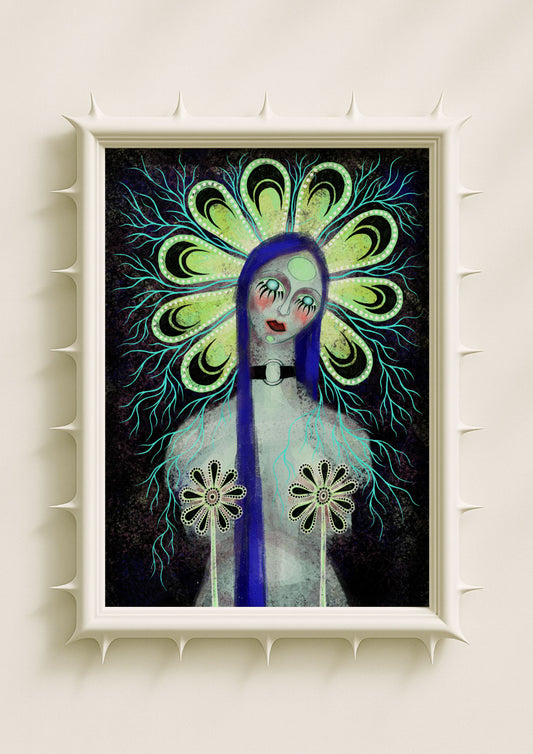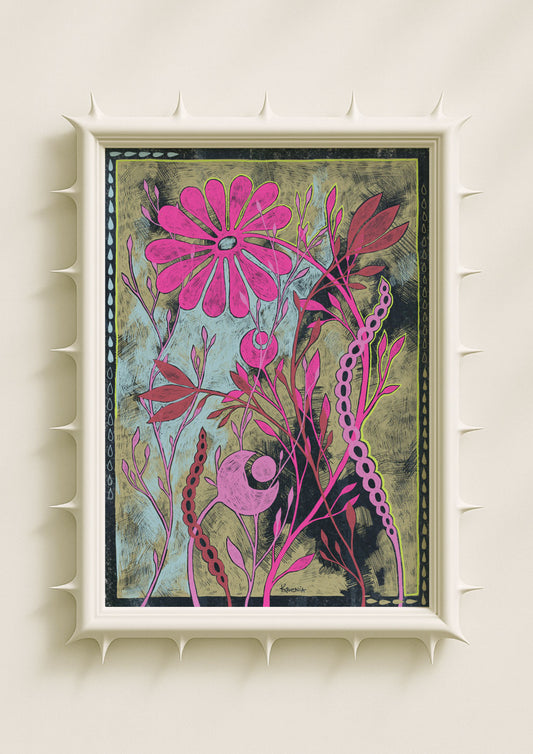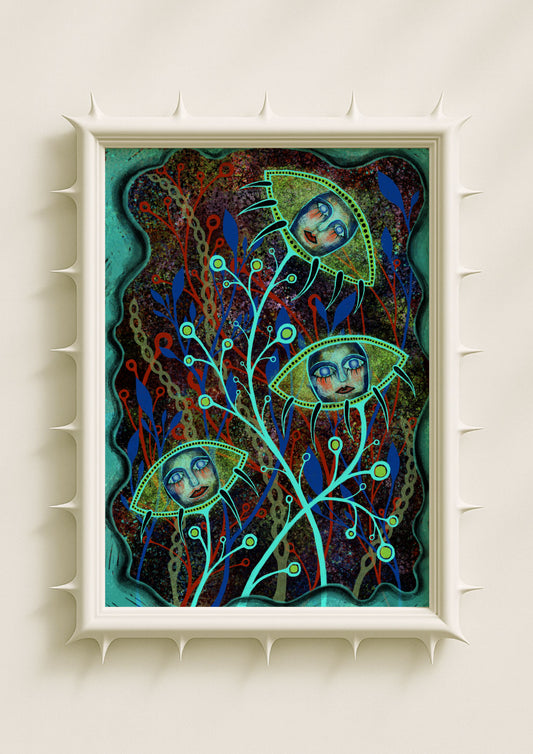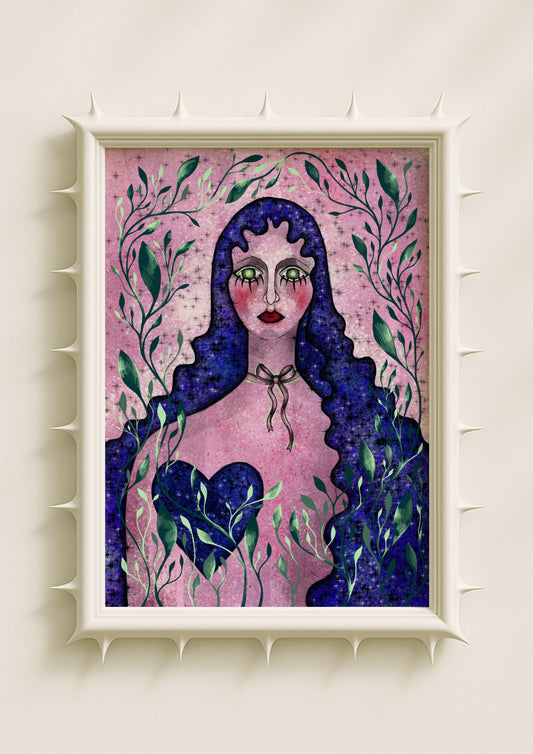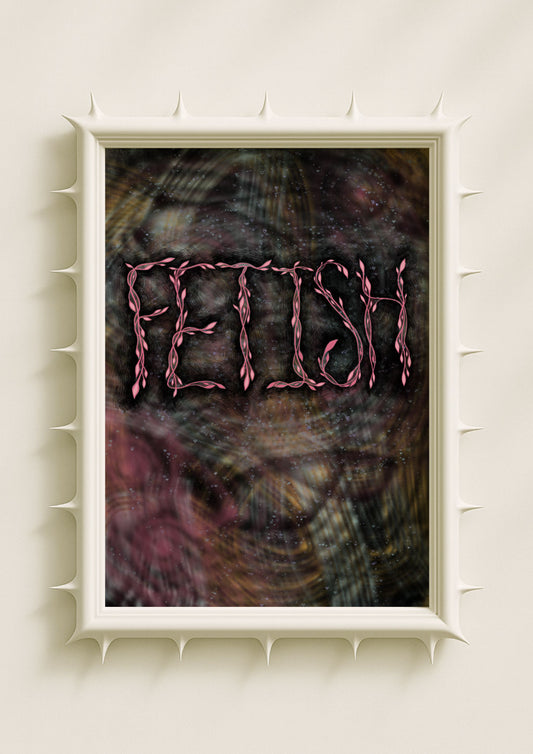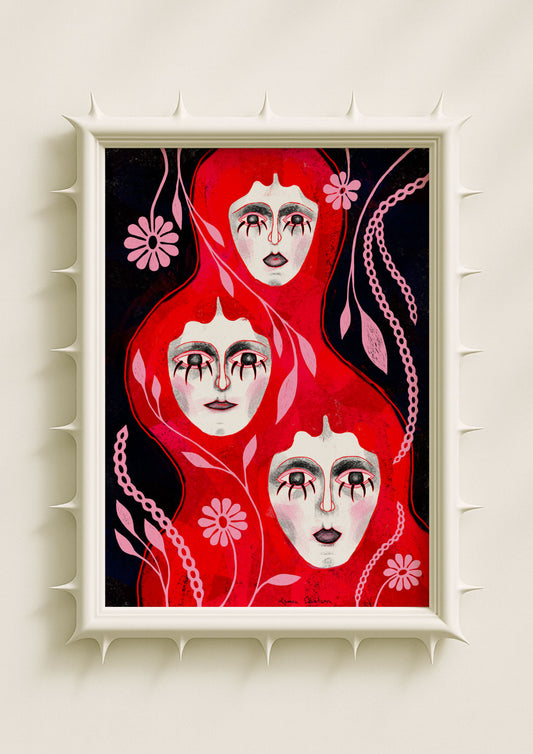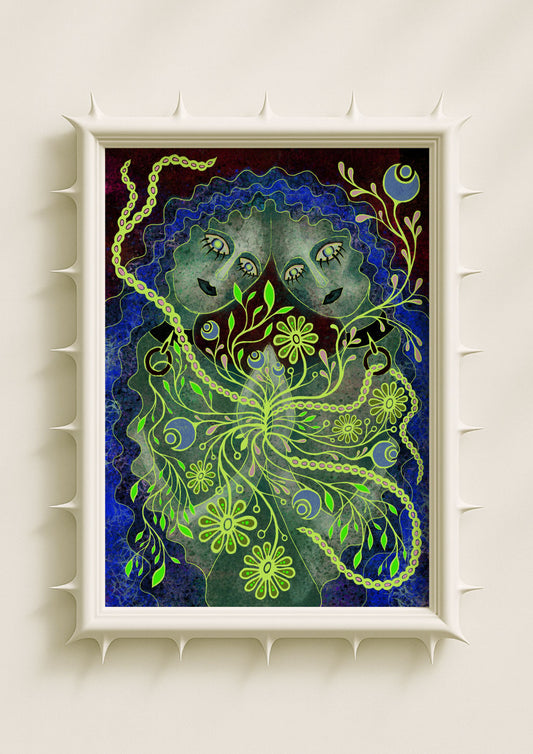When Colour Becomes Structure Instead of Decoration
In expressive colour blocking, colour is not a finishing touch — it is the architecture of the artwork. Large planes of pigment, sharply defined shapes, and intentional contrasts form the emotional skeleton of the image. Instead of blending softly, colours meet each other with deliberate edges, creating tension, clarity, or mood depending on how they sit together. This visual strategy turns colour into a storytelling tool, revealing the emotional logic behind the composition.

Emotional Weight Through Strong Contrasts
Colour blocking relies on contrast not just visually, but emotionally. When deep purples meet pale skin tones, or warm reds sit beside cold blues, the contrast becomes a psychological signal. It can convey friction, longing, or a quiet pull between two emotional states. The meeting point between colours becomes a site of meaning — a border where emotion shifts. In portrait art, these contrasts highlight inner conflict, strength, mystery, or vulnerability in a way that feels immediate and visceral.
Colour As a Mood-Setting Language
Different blocks of colour carry emotional atmospheres of their own. A single plane of muted green can communicate calm; a heavy block of saturated orange can bring urgency; a cold blue background can create introspection or distance. When arranged intentionally, these planes build an emotional environment around the figure. The viewer doesn’t just see the colours — they feel them. The composition becomes a space to step into, shaped by mood rather than realism.
Simplification That Reveals Rather Than Reduces
Colour blocking often removes detail, simplifying forms into broader shapes. Instead of diminishing expression, this simplification enhances it. A face emerging from flat fields of colour feels more symbolic, more archetypal. The reduction of detail draws attention to the emotional core of the image — the gaze, the silhouette, the tension between colours. Stripping away realism allows the artwork to communicate more directly, without distraction.

How Colour Blocks Shape Focus and Movement
Large fields of colour guide the viewer’s eye. A bold background pushes the figure forward. A dark block framing one side of the face shifts attention to the other. A sudden interruption in colour — a diagonal streak, a sharply defined area — creates momentum. These decisions control the rhythm of viewing, moving the eye across the image in a way that feels intuitive and emotionally driven. Colour blocks become directional cues, shaping the pace of perception.
Expressive Colour as Identity
In contemporary portrait art, expressive colour blocking often acts as a mirror to identity. Instead of anchoring the figure in literal surroundings, the colours become an extension of their inner world. Red may reveal pressure or agitation. Lavender may signal softness. Yellow may hover between anxiety and light. The figure becomes inseparable from the colour around them; together they create a psychological portrait rather than a descriptive one.

The Power of Boldness in a Soft Medium
Even when the subject matter is delicate — a quiet face, a gentle expression — colour blocking brings boldness. The sharp borders and strong tonal decisions introduce confidence and clarity. The artwork does not whisper; it stands its ground. This boldness isn’t aggressive; it’s assured. It communicates that emotion can be both tender and strong, that softness can coexist with intensity, and that clarity of feeling can be expressed visually without overwhelming the viewer.
Why Expressive Colour Blocking Resonates Today
In a world saturated with images, expressive colour blocking cuts through visual noise. Its clarity, emotional directness, and structural simplicity make it instantly readable yet deeply layered. It reflects the modern desire for bold expression paired with emotional honesty. Colour becomes the language of truth — vivid, unfiltered, and unmistakably human.
